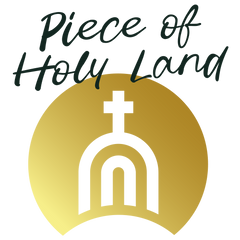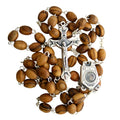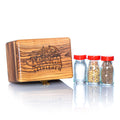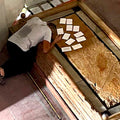The Garden of Gethsemane: A Sanctuary of Prayer and Reflection
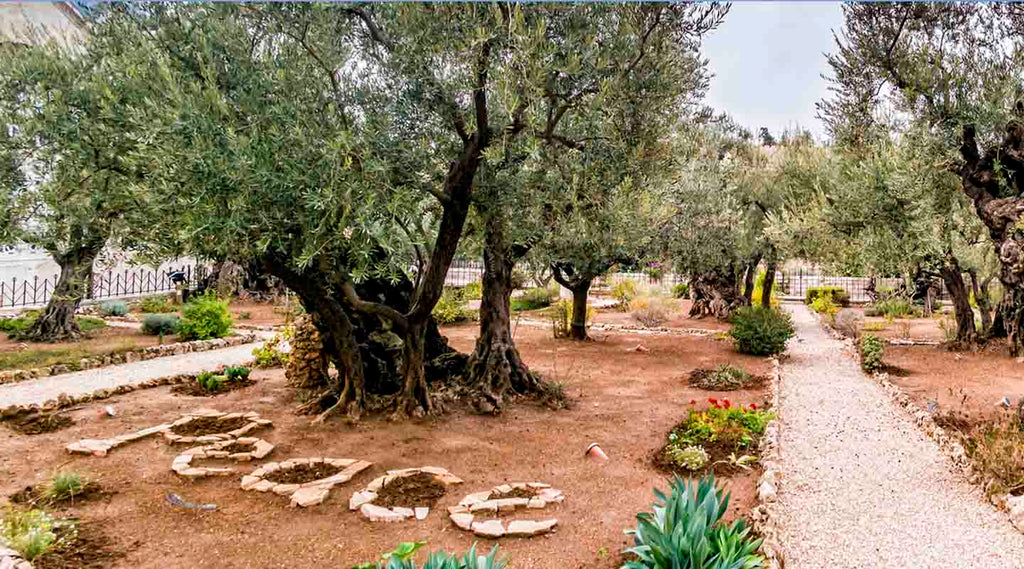
The Garden of Gethsemane, at the base of the Mount of Olives in Jerusalem, is a place of immense spiritual significance and beauty. This sacred garden, with its ancient olive trees and tranquil ambiance, invites visitors into a profound space of prayer and contemplation, mirroring the moments of deep sorrow and surrender that Jesus experienced on the night of His betrayal.
A Historical and Spiritual Landmark
Gethsemane, meaning “oil press,” has been a significant site for Christian pilgrims for centuries. According to tradition, it was here that Jesus came to pray after the Last Supper, accompanied by His disciples. The garden’s location, at the foot of the Mount of Olives and across the Kidron Valley from the Temple Mount, makes it a natural and accessible place for retreat and reflection.
Today, visitors can see only a small portion of the original olive groves, but this small garden, enclosed by stone walls and guarded by the towering facade of the Church of All Nations, holds a timeless and almost ethereal quality. The church, built over the rock where Jesus is believed to have prayed in agony, serves as a reminder of His submission to God’s will, and its solemn interior invites silent reflection and prayer.
The Beauty of the Garden
The Garden of Gethsemane is not only historically significant but also strikingly beautiful. The ancient olive trees, their gnarled trunks twisting up toward the sky, are a testament to endurance and resilience. These trees, some of which are believed to be nearly a thousand years old, create a natural canopy that offers shade and solace to visitors. The meticulously maintained pathways, bordered by vibrant flowers and lush greenery, add to the garden’s serene atmosphere, making it a perfect place for meditation and prayer.
The atmosphere of the garden is a blend of sacred stillness and natural beauty. Despite its location in the heart of a bustling city, the garden feels like a world apart, a sanctuary where time seems to stand still. The gentle rustling of leaves, the chirping of birds, and the fragrance of blossoms create a tranquil environment that encourages deep contemplation and connection with God.

The Church of All Nations: A Testament to Faith
The Church of All Nations, also known as the Basilica of the Agony, stands adjacent to the garden and enhances the spiritual ambiance of this holy site. The church’s design, with its dark interior and purple-blue stained glass windows, evokes the somber mood of that fateful night. Its central feature, the “Rock of Agony,” is believed to be the very rock upon which Jesus prayed before His arrest.
The church’s facade is adorned with a striking mosaic that depicts Jesus praying in Gethsemane, flanked by two angels. This visual representation of His anguish and submission invites the faithful to reflect on their own struggles and to find strength in Jesus’s example of obedience and trust in God’s plan.

The Gethsemane Grotto: The Sacred Cave of Prayer
Adjacent to the Garden of Gethsemane lies a small, ancient cave known as the Gethsemane Grotto. This humble, stone-walled cave is traditionally believed to be the place where Jesus often met with His disciples to pray and rest. On the night before His crucifixion, it was here that Jesus left eight of His disciples while He took Peter, James, and John further into the garden.
The Gethsemane Grotto, with its cool, dim interior, provides a stark contrast to the open beauty of the garden outside. The atmosphere within the cave is one of stillness and solemnity, inviting visitors to enter a space of intimate reflection and prayer. The cave has long been venerated by Christians as a place of solace, where Jesus spent His final moments before the intense sorrow of Gethsemane and the events of His Passion.

A Sanctuary for Prayer and Reflection
The Garden of Gethsemane is a place where the faithful come to pray, to find solace, and to seek healing. The beauty of the garden, combined with its profound spiritual significance, makes it an ideal setting for personal reflection and prayer. Whether offering prayers for healing, seeking peace in times of anxiety, or simply giving thanks to God, this sacred space provides a powerful connection to the divine.
For many visitors, praying in the garden is a deeply moving experience. The sense of being in the very place where Jesus prayed in His most vulnerable moment invites a profound sense of empathy and connection. Pilgrims often leave their intentions and prayers on the prayer wall or bring them to the priests who serve at the site, trusting in the garden’s special place in God’s heart.
For those who cannot visit in person but wish to have their prayers resonate in one of the most sacred places for Christians, services like the prayer request courier from Piece of Holy Land are great alternative. They enable believers to submit their prayers, which are then delivered to the Church of Holy Sepulchre. This provides a way for their intentions to be joined with those of countless pilgrims who have prayed in this sacred garden.
Prayers for Healing and Peace
The Garden of Gethsemane is a powerful place for prayers of healing and peace. The symbolism of the olive trees, which have survived centuries of storms and strife, is a poignant reminder of the resilience of faith and the hope that can be found even in the darkest times.
Prayers for healing, whether for physical, emotional, or spiritual wounds, resonate deeply in this space. Believers can offer a Catholic prayer for healing, such as:
“Heavenly Father, in Your love and mercy, grant me healing and peace. Strengthen me with Your grace and fill me with the hope and joy of Your presence. I trust in Your goodness and Your promise to be with me always. Amen.”
For those experiencing anxiety or fear, the garden offers a place to surrender those worries into God’s hands, echoing Jesus’s own prayer of surrender: “Not as I will, but as You will.” Prayers for anxiety and fear, such as:
“Lord, I bring my worries and fears before You. Calm my anxious heart and fill me with Your peace. Help me to trust in Your care and to know that You are with me, guiding me through every storm. Amen.”
These prayers, offered in the garden’s peaceful setting, help to deepen one’s connection to God and to find comfort in His loving presence. Here you can explore our Prayer Library for a collection of prayers to inspire and uplift your spirit.
Conclusion:
The Garden of Gethsemane, with its ancient trees, tranquil paths, and sacred history, remains a place of deep spiritual significance. It is a testament to the power of prayer, the beauty of surrender, and the strength that can be found in moments of vulnerability and trust in God. Whether through a visit in person or through prayers offered from afar, the garden invites all who encounter it to bring their hearts before God, to seek His guidance and peace, and to find solace in the timeless beauty and spiritual depth of this holy place.
SHARE:

